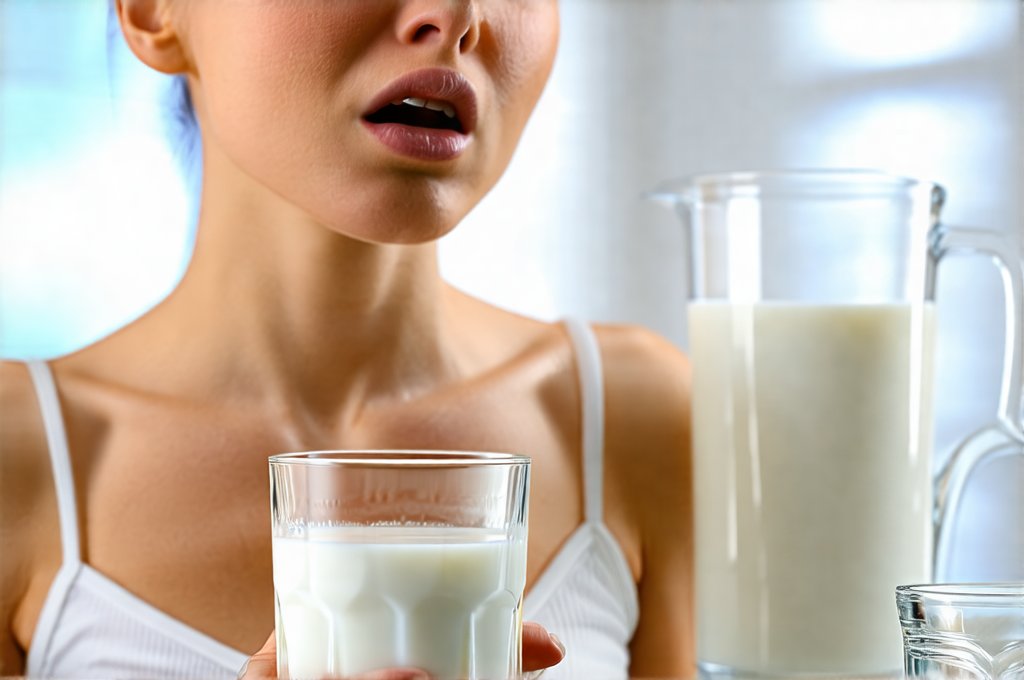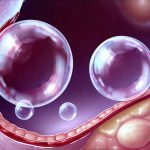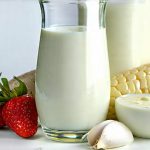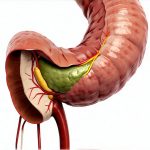Acid reflux, also known as heartburn, is a surprisingly common experience affecting millions worldwide. It occurs when stomach acid flows back up into the esophagus, leading to a burning sensation in the chest, regurgitation, and sometimes even difficulty swallowing. While many factors contribute to this uncomfortable condition – diet being a significant one – the role of seemingly innocuous foods like milk often sparks debate. Is it a soothing balm for an irritated esophagus, as many have believed for generations? Or does it inadvertently worsen symptoms, adding fuel to the fire? The answer, unfortunately, isn’t straightforward and depends heavily on individual physiology, type of milk consumed, and even the severity of the reflux itself. Understanding these nuances is key to navigating dietary choices when managing acid reflux.
The conventional wisdom around drinking milk for heartburn stems from its alkaline nature. Stomach acid is, well, acidic, and the idea that an alkaline substance could neutralize that acidity seems logical. However, this simple premise overlooks a more complex interplay of physiological factors. While initially providing temporary relief due to its buffering effect, milk can paradoxically stimulate further acid production in some individuals. This occurs because milk contains proteins that encourage gastric emptying, leading to increased stomach acid secretion. Furthermore, the fat content in whole milk can relax the lower esophageal sphincter (LES) – the muscular valve that prevents stomach acid from flowing back up – allowing more reflux to occur. Therefore, what starts as a soothing attempt can sometimes end up exacerbating the problem.
The Alkaline Myth and Milk’s Composition
The concept of neutralizing stomach acid with alkaline substances is appealing, but it’s an oversimplification. While milk does have a higher pH than gastric acid (typically around 6.7-6.8 compared to a stomach pH of 1.5-3.5), its buffering capacity isn’t as significant as often assumed. The amount of milk needed to truly neutralize substantial stomach acid would be considerable, and even then, the effect is temporary. More importantly, focusing solely on neutralization misses the bigger picture – the underlying mechanisms driving reflux. – Milk’s composition plays a crucial role in how it interacts with acid reflux: – Proteins: Encourage gastric emptying and potentially increase acid production. Casein, in particular, has been identified as a potential trigger for some individuals. – Fat: Relaxes the LES, increasing the likelihood of reflux. Whole milk poses a greater risk than skim or low-fat options due to its higher fat content. – Calcium: While calcium can sometimes aid in neutralizing acid, it’s also linked to increased gastrin production in certain people, potentially leading to more acid secretion over time. If you suspect food or stress may be contributing factors, exploring those connections is important https://vitagastro.com/are-you-reacting-to-food-or-stress/.
The type of milk consumed significantly impacts its effect on reflux. Skim milk and low-fat milk are generally considered less problematic than whole milk because they contain less fat, reducing the risk of LES relaxation. However, even skim milk can trigger symptoms in susceptible individuals due to its protein content. Lactose intolerance also plays a role; those with lactose deficiency may experience increased gas and bloating after consuming milk, which can contribute to abdominal pressure and worsen reflux. Interestingly, some people find that fortified milks (with added vitamins and minerals) exacerbate their symptoms, potentially due to the additives themselves or changes in the milk’s overall composition during fortification. It’s a highly individual response, making it difficult to generalize about milk’s impact on acid reflux. Understanding what is acid reflux can help you better manage your symptoms https://vitagastro.com/what-is-acid-reflux-understanding-the-basics/.
Dairy Alternatives and Reflux Considerations
Given the potential for dairy milk to worsen reflux symptoms, many people explore alternative options. Plant-based milks have surged in popularity, offering a variety of choices with varying effects on digestive health. – Almond milk: Generally well-tolerated by most, almond milk is low in fat and doesn’t contain lactose. However, some individuals may experience bloating or gas from the almonds themselves. – Soy milk: A good source of protein, soy milk can sometimes trigger reflux in those sensitive to legumes or with soy allergies. It’s also relatively alkaline, similar to dairy milk, but without the problematic fats and casein. – Oat milk: Increasingly popular due to its creamy texture, oat milk is generally gentle on the stomach and unlikely to worsen reflux for most people. However, be mindful of added sugars in some brands. – Coconut milk (beverage): Different from coconut milk used in cooking, coconut milk beverage is a lighter option that can be easily digested by many. Consider whether you’re reacting to food or environment as well https://vitagastro.com/are-you-reacting-to-food-or-environment/.
It’s important to remember that even dairy alternatives aren’t universally safe for acid reflux sufferers. Some plant-based milks contain carrageenan, an additive used as a thickening agent that has been linked to digestive issues in some individuals. Additionally, flavored milk alternatives often contain added sugars and artificial sweeteners, which can also contribute to reflux symptoms. Reading labels carefully and opting for unsweetened, minimally processed options is crucial. Ultimately, the best dairy alternative for managing acid reflux depends on individual tolerance and sensitivities. Experimenting with different types and observing your body’s response is the most effective way to determine what works best for you. If you’re experiencing ear pain or pressure, it could be related https://vitagastro.com/can-acid-reflux-cause-ear-pain-or-pressure/.
Identifying Your Personal Triggers
Understanding that milk’s effect on reflux varies greatly emphasizes the importance of self-awareness and identifying personal triggers. This involves a process of careful observation and elimination, often referred to as an elimination diet. – Step 1: Keep a detailed food diary for at least one week, recording everything you eat and drink, along with any associated symptoms (heartburn, regurgitation, bloating, etc.). Be specific about the type of milk consumed (whole, skim, almond, soy) and the amount. – Step 2: Once you have sufficient data, look for patterns between your diet and your symptoms. Are there specific foods or beverages that consistently trigger reflux? Is it more likely to occur after consuming dairy products? – Step 3: Consider a trial elimination period where you remove suspected triggers (like all forms of milk) from your diet for two weeks. Monitor your symptoms closely during this time. If your reflux improves significantly, gradually reintroduce the eliminated foods one at a time, observing whether symptoms return.
It’s crucial to avoid making drastic dietary changes without consulting a healthcare professional. They can help you design an elimination diet that’s safe and effective, ensuring you continue to receive adequate nutrition. Furthermore, they can rule out other potential causes of your reflux and recommend appropriate treatment options if needed. Remember that acid reflux is often multifactorial; it’s rarely caused by a single food item. Other factors like stress, obesity, smoking, and certain medications can also play significant roles. You might find drinking less water helps too https://vitagastro.com/can-drinking-less-water-improve-digestion/.
Lifestyle Modifications for Reflux Management
Beyond dietary adjustments, several lifestyle modifications can significantly reduce the frequency and severity of acid reflux episodes. – Elevate the head of your bed: Raising the head by 6-8 inches helps prevent stomach acid from flowing back up into the esophagus while you sleep. – Avoid large meals: Eating smaller, more frequent meals puts less pressure on your lower esophageal sphincter. – Don’t lie down immediately after eating: Allow at least 2-3 hours between your last meal and bedtime. – Maintain a healthy weight: Obesity increases abdominal pressure, which can contribute to reflux.
Managing stress levels is also crucial. Stress can exacerbate digestive issues, including acid reflux. Techniques like yoga, meditation, or deep breathing exercises can help reduce stress and promote relaxation. Finally, be mindful of your clothing choices; tight-fitting clothes can increase abdominal pressure and worsen symptoms. Prioritizing these lifestyle changes alongside dietary adjustments provides a holistic approach to managing acid reflux. If cold weather worsens things, adjust accordingly https://vitagastro.com/can-cold-weather-worsen-digestive-discomfort/.
When to Seek Medical Attention
While many people can manage mild acid reflux with lifestyle modifications and dietary changes, it’s essential to seek medical attention if your symptoms are severe or persistent. – Frequent heartburn (more than twice a week) – Difficulty swallowing (dysphagia) – Persistent vomiting – Unexplained weight loss – Chest pain that radiates to the arm or jaw These symptoms could indicate a more serious underlying condition, such as gastroesophageal reflux disease (GERD), esophagitis, or even Barrett’s esophagus. A healthcare professional can diagnose your condition accurately and recommend appropriate treatment options, which may include medications like proton pump inhibitors (PPIs) or H2 blockers. Self-treating severe or persistent acid reflux is never advisable. It’s always best to consult a medical professional for proper evaluation and guidance. Also consider if music or light affects symptoms https://vitagastro.com/can-music-or-light-affect-gut-symptoms/.


















